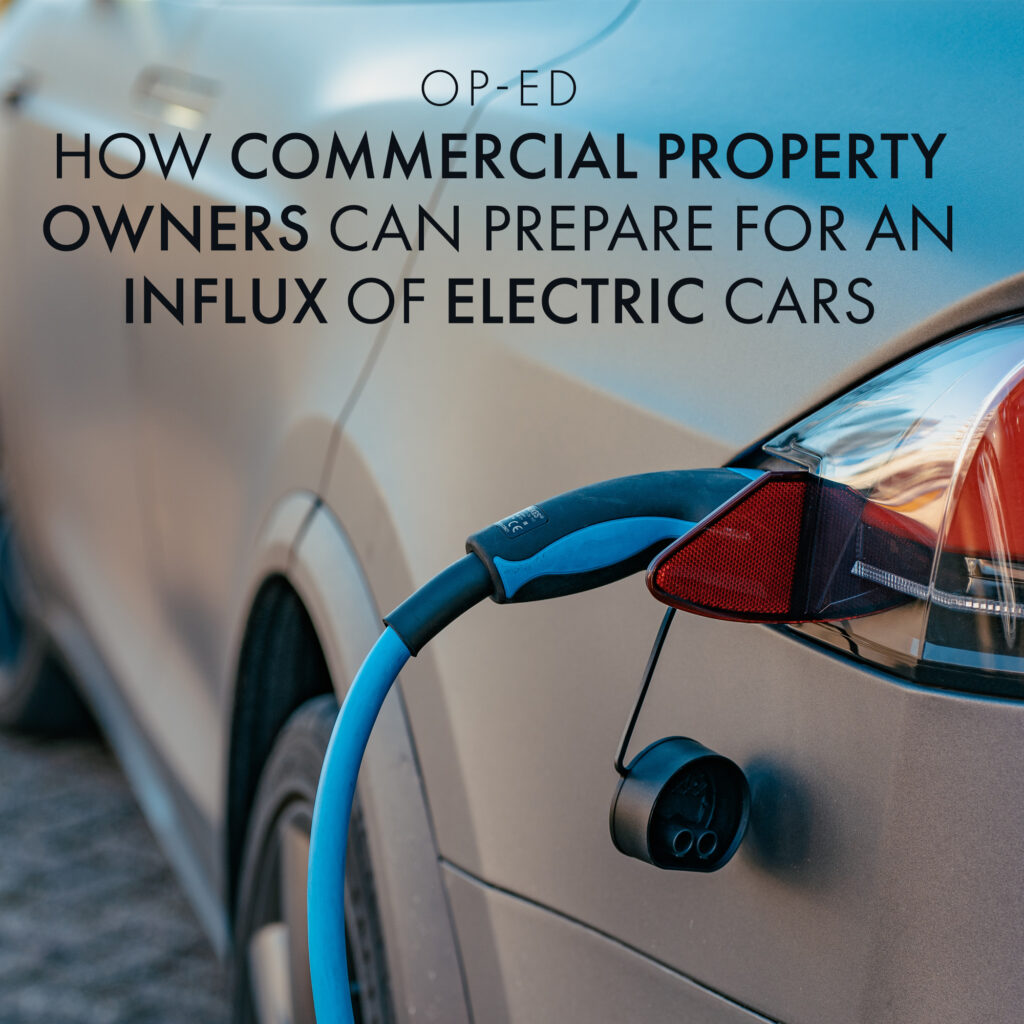By: Daniel Colombini and Vinod Palal at Crain’s New York Business
Daniel Colombini and Vinod Palal are principals at New York City-based consulting engineering firm Goldman Copeland.
The use of electric vehicles in the United States is growing rapidly, and commercial property owners in New York should prepare for sudden acceleration. The exact speed at which electric car use will grow is not known, but with it will come a rapid increase in the need for charging stations. It’s time for property owners to create plans, so they are ready to move quickly as the need arises. Here are four steps to take:
First, begin thinking about the nature and needs of existing properties in this context. Consider the number of existing parking spaces, the proximity of the electrical infrastructure, and the potential demand for electric vehicle charging. Also, consider the marketing benefits of offering sufficient electric vehicle chargers to potential tenants—to meet their needs and underscore the property’s environmental commitment.
Second, if the anticipated needs are substantial, survey the infrastructure. Secure professional assistance to evaluate the existing electrical infrastructure and what is needed to adapt it. That will be determined in part by the capacity of the needed electrical service upgrade, the distance from existing electrical service to the sites where chargers are needed, whether digging trenches is required, and any local law requirements.
In New York City, Local Law 130 of 2013 requires that any parking garages or parking lots that make electrical modifications must include the electrical capacity needed to make at least 20% of the parking spaces suitable for electric vehicles. There is also proposed legislation in the City Council to amend this to require parking garages and parking lots to have at least 40% of their parking spots powered by electric vehicles by 2030. This would apply retroactively to all such properties.
Third, determine the estimated cost of any needed upgrade. The cost has three primary factors: the upfront infrastructure upgrade required; the extent of financial incentives available, and the potential for the upfront cost to be reimbursed over time through a nominal surcharge (perhaps 10 cents per hour per charge) beyond the energy consumption used by each vehicle serviced.
Chargers on commercial properties would typically be Level 2 chargers, which can provide around 32 miles of range per hour of charging. That’s about twice as fast as a Level 1 residential charger.
Incentives available
Fortunately, government and utility incentives are available and can cover 50% or more of the cost. In New York City and the surrounding region served by Con Edison, incentives from the New York State Energy Research and Development Authority (NYSERDA) and Con Edison can reduce the upfront cost significantly. Con Edison’s rebate per electric vehicle charger port can be as much as $11,200.
Fourth, develop a staged plan to meet the need. Determine how many electric vehicle chargers are required and when. Activate the plan so that the property is suitably ahead of the demand.
Every commercial property owner should take these four steps, as electric vehicle chargers will be expected at commercial properties nationwide. These steps will ensure that the properties are ahead of demand and are part of the vital national priority to reduce carbon emissions.

